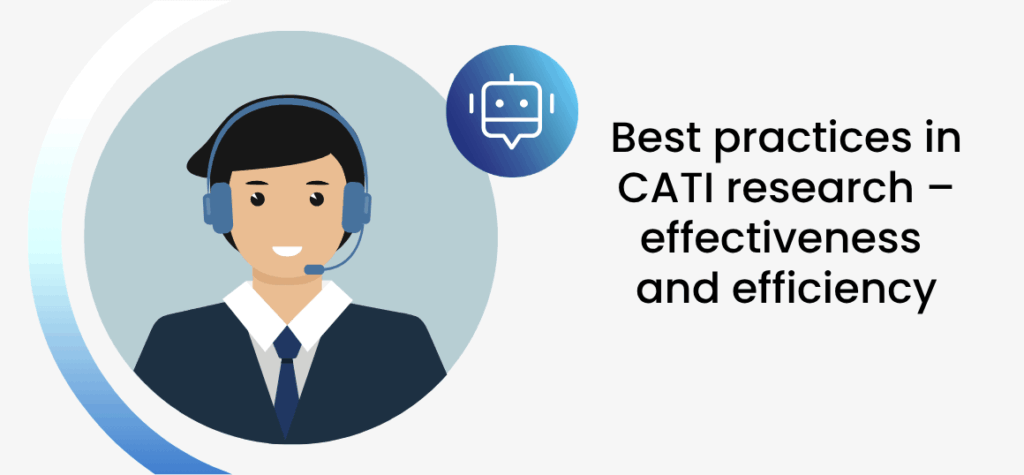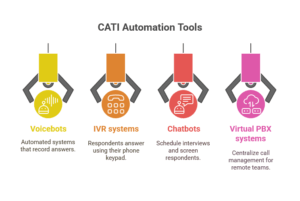Best practices in CATI research – effectiveness and efficiency

Effective CATI surveys – what really works?
In theory, everything seems simple—we have a respondent database, a prepared questionnaire, and trained interviewers. In practice, however, even the best-planned Computer-Assisted Telephone Interview (CATI) can encounter issues that reduce the effectiveness of the process and the quality of the data collected. Sometimes it’s due to technical errors, minor organizational oversights, or a mismatch between the plan and the real working conditions of the research team.
And yet, the benefits of telephone interviews are undeniable. That’s why it’s worth looking at proven practices that help not only to conduct the survey according to plan but also to achieve results that are genuinely useful—without wasting time or budget. What truly matters is not just the number of completed interviews, but the quality of the responses gathered—responses that will later inform reports and strategies. This article focuses on what really works in the field: how to improve interviewer performance, how to avoid common mistakes, and how to make smart use of the technology that supports the entire process. The goal isn’t to do more—it’s to do better.
CATI surveys – what is this method and when should you use it?
CATI, or Computer-Assisted Telephone Interviewing, is a quantitative research method involving telephone interviews conducted with the help of specialized software. The interviewer speaks with the respondent while entering answers directly into the system, which automatically guides the flow of the questionnaire—ensuring logical progression, filters, and skip patterns. At the same time, the system accurately and securely records responses, significantly reducing the risk of errors and speeding up data analysis. As a result, CATI combines the benefits of face-to-face interviews with the convenience and speed of telephone contact, while simplifying the entire data collection process.
Although the rise of online surveys (CAWI) has changed the research landscape, CATI remains highly effective for marketing research, public opinion polls, customer satisfaction studies, social research, and market analysis. It allows researchers to reach people from various age groups and locations, including those less active online—such as seniors or residents of smaller towns. Moreover, CATI enables real-time monitoring of interview quality and interviewer performance, ensuring a high level of control over the entire process.
Sampling and targeting respondents
A well-planned sampling process increases the reliability of results and reduces the risk of errors. This stage deserves special attention, as it directly impacts the overall effectiveness of the survey implementation. Recommended best practices include:
- clearly defining the target group – this makes it easier to select respondents who meet the study criteria, improving data consistency and relevance;
- applying the appropriate sampling method – such as random or quota sampling, to avoid disproportionality and ensure balance within the sample structure;
- using up-to-date databases – this increases the chances of successful contact and reduces the number of failed call attempts;
- implementing screening filters – these help eliminate random or irrelevant contacts, shortening the overall survey duration.
Questionnaire design – language, length, and logical flow
The design of the CATI questionnaire directly affects both the quality of the data collected and the respondent’s comfort during the interview. Language is particularly important—it should be simple, clear, and adapted to the communication level of the target group. Avoiding jargon or overly technical terms increases the likelihood of obtaining accurate responses.
The length of the interview is equally important—a survey that is too long may discourage participation and lead to dropouts. It’s essential to keep the number of questions to a necessary minimum, without sacrificing the core objectives. The logic of the questionnaire should be transparent and coherent—questions should flow naturally from one to the next, and the use of filters and skip logic helps avoid irrelevant questions. Unlike the PAPI method (Paper and Pencil Interviewing), where the interviewer fills out the questionnaire manually and must carefully follow the question order and recording accuracy, CATI minimizes the risk of technical errors by automating the logical flow of the survey.
The interviewer’s role – training and quality of interaction
Professional interviewers are responsible for direct contact with respondents during the computer-assisted telephone interview, and thus for the overall tone of the conversation and the level of participant engagement. That’s why proper training is critical. Key focus areas include:
- comprehensive training – covering both the use of CATI software and the development of interpersonal skills. This ensures the interviewer feels confident and follows proper methodology;
- understanding the research topic – a well-prepared interviewer can answer basic questions while remaining neutral and professional, which builds trust and credibility;
- strong communication skills – politeness, flexibility, and active listening enhance the quality of interaction with the respondent;
- ongoing performance monitoring – ensures high standards throughout the project and allows for quick response to any issues.
These well-trained professionals form the foundation of successful CATI research.
Porozmawiaj z naszym specjalistą

